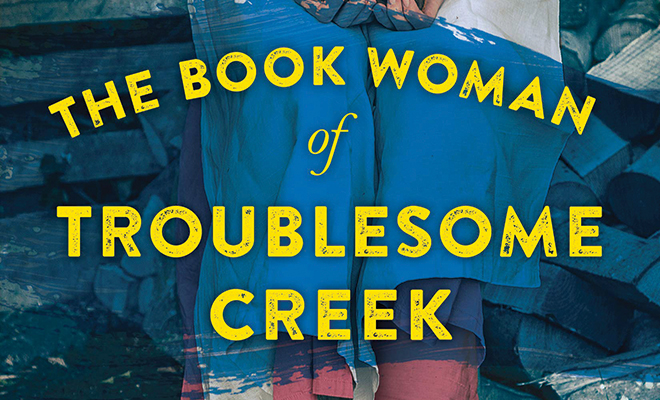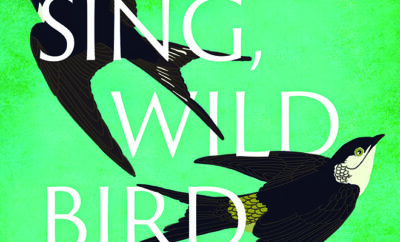
The Book Woman of Troublesome Creek by Kim Michele Richardson
Historical fiction is a time machine, transporting us to another period and place, bringing history to life through storytelling. The best historical fiction novels are well researched and imaginative, with characters who beckon to us, drawing us into their experiences and circumstances. They open our eyes, challenge our minds and offer us new perspective.
In The Book Woman of Troublesome Creek, we travel deep into the Appalachian Mountains. It’s 1936. The Great Depression is ravaging the country, but in the hollers of rural Kentucky, poverty, isolation and hunger have been familiar foes for generations. We meet 19-year-old Cussy Mary Carter, a coal miner’s daughter and Pack Horse Librarian. She is devoted to her recently widowed father, despite her resistance to his efforts to see her married and settled. Cussy Mary, headstrong and independent, has other plans for her life.
An unlikely heroine, Cussy Mary is not only dirt poor and unmarried at a time when a woman’s worth was determined by the man who possessed her; she is also blue. Author Kim Michele Richardson pulls back the curtain on a little-known chapter of American history and flawlessly weaves together compelling narratives of the Blue People of Kentucky and the Pack Horse Library Project. Known in the community of Troublesome as Bluet, Cussy is inspired by the real-life curiosity of the Fugate family, who, as a result of a rare genetic condition unknown to medical science at the time, had blue skin. Through the quiet but unflinching spirit of Bluet and a vivid cast of characters along her library delivery route, a remarkable and endearing story unfolds.
The Pack Horse Library Project served the most remote regions of Appalachia. In 1935, President Franklin Roosevelt introduced the Works Progress Administration as part of the New Deal, an initiative designed to propel the country out of the Great Depression. According to Cussy Mary, “We’d been depressed as long as I could remember, but now, all of a sudden, the government said we needed help…For many mountainfolk, it was our first taste of what a library could give…one that left behind a craving for more.”
Richardson, a Kentucky native, uses her beloved home state as the setting for her novels. Book Woman is her fourth novel and fifth book, and of the three I have read, it is her best work to date. Richardson is polishing her style, gaining confidence in her voice and honing her gift for creating richly imagined, multi-layered tales that connect the past to the present. She writes tenacious, resilient characters that often reflect her own encounters with adversity and redemption.
Richardson shares her personal story in a heart-wrenching memoir, The Unbreakable Child, which chronicles her childhood experiences in the St. Thomas/St. Vincent Orphan Asylum. She suffered appalling abuses by the Catholic clergy caregivers for many years, and decades later won the first-ever settlement paid by Roman Catholic nuns in the United States, restitution for decades of brutal institutional abuse of herself, her three sisters, and 42 other children. Richardson is a survivor, not a victim, and perhaps because of her own intimate acquaintance with trauma and recovery, her writing often explores themes of abuse and social injustice in tandem with regional lore.
Cussy Mary endures prejudice, bigotry and physical danger as she seeks to bring acceptance and understanding to her small community, with the enduring power of knowledge. She is hunted by the ignorant and small-minded preacher who seeks to destroy anything or anyone who is different, whether in appearance or in perspective. But she is also befriended by the patrons on her route, often outcasts themselves, who come to rely on her book deliveries for respite from a life of hardship and pain. Her impact on the most needy gives her life purpose and meaning, and she is uncompromising in the pursuit to bring them connection to each other and to the world beyond the holler.
Not without her own desire for connection, Cussy also struggles with the shame and loneliness that comes from being an outcast. She longs for acceptance by the townspeople of Troublesome Creek. When the kind doctor, who is intrigued by the condition that plagues the Carter clan, offers her a chance to temporarily remove the blue tint from her skin, she doesn’t hesitate. She is willing to endure severe side effects of an experimental medication just to look like everyone else. She becomes the subject of tests and research in hopes of finding a cure for the condition that keeps her separate from local society.
Richardson has created a deeply human, deeply moving story with a beautiful cast of characters who represent the best and worst of human nature, as well as a universal desire to be seen and loved for who we are. It is highly relevant to present-day issues and a perfect book club selection for its many layers and themes and pure enjoyability. ■







